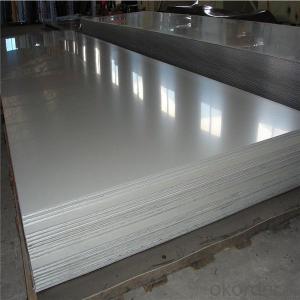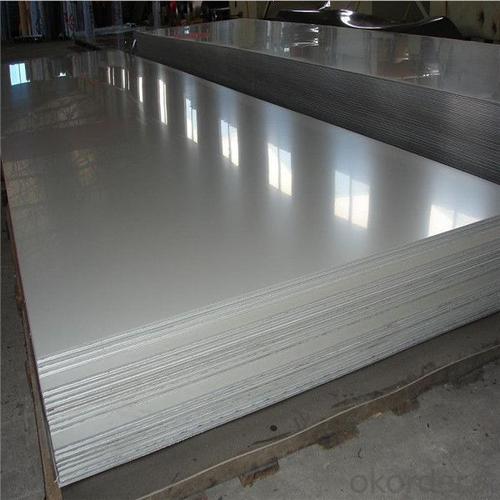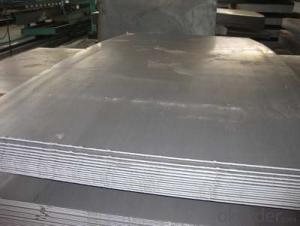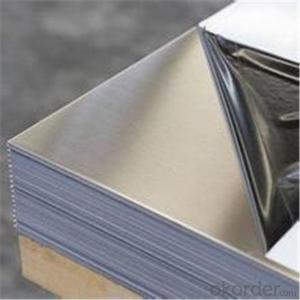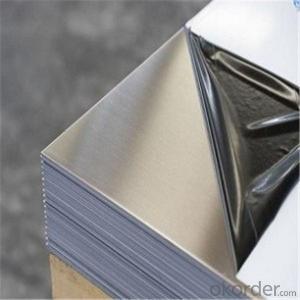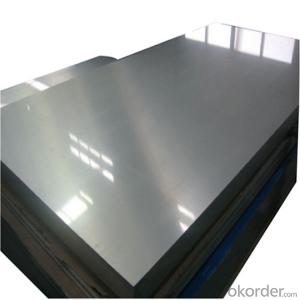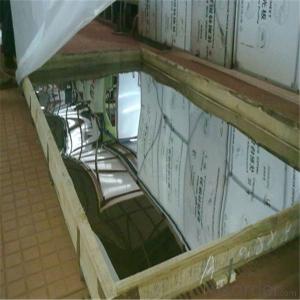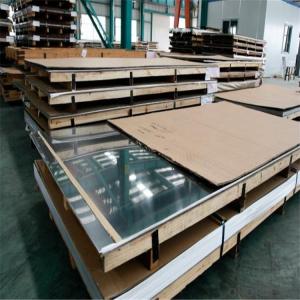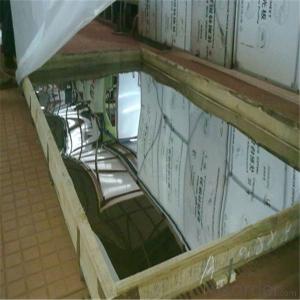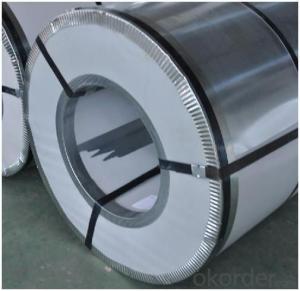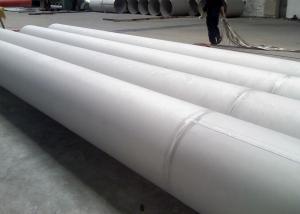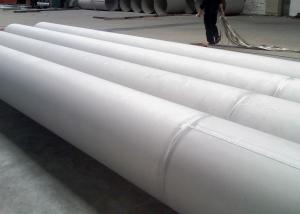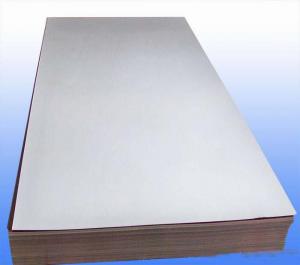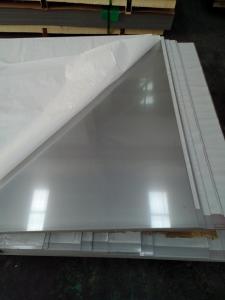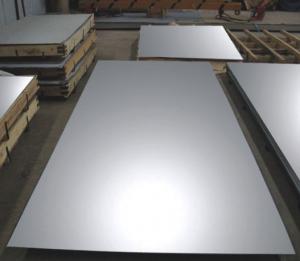201 304 Stainless Steel Sheets TISCO LISCO ZPSS
- Loading Port:
- Shanghai
- Payment Terms:
- TT OR LC
- Min Order Qty:
- 1 m.t.
- Supply Capability:
- 2000 m.t./month
OKorder Service Pledge
OKorder Financial Service
You Might Also Like
Specification
304 316 cold rolled stainless steel sheet
Standard:JIS,AISI,ASTM,GB,DIN,EN
Material:201,202,316,304,304L,316,316L,321,430,etc.
Thickness:0.5mm~2.0mm
Width: 1000mm~1250mm
Length:1000mm-6000mm or as your requirement
Finish:2B, BA, Hair Line, No.1,No.4, Mirror ,color,etching
Technique:cold rolled
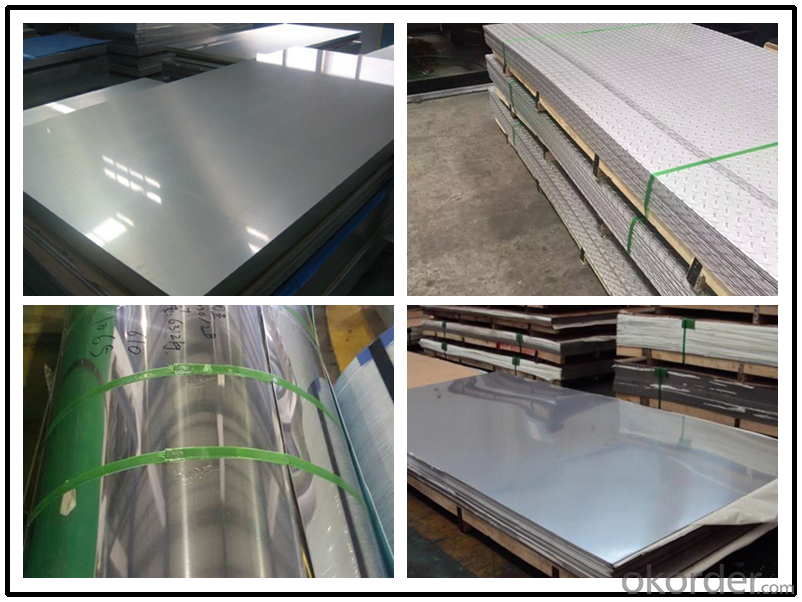
Packaging & Shipping
Trade terms:
Packing: Standard export seaworthy packing with waterproof paper,metal belt pack sheet,then put them in wooden pallet(or put them in wooden case),then put them in container or as customer's requirement.
MOQ: 5 metric tons
Shipping Term: FOB GUANGDONG or CNF import port
Delivery Time: 15 to 35 days after the receipt of the deposit
Payment Term: T/T 30% deposit, Balance against the copy of B/L; or L/C at sight
201 304 cold rolled stainless steel sheets
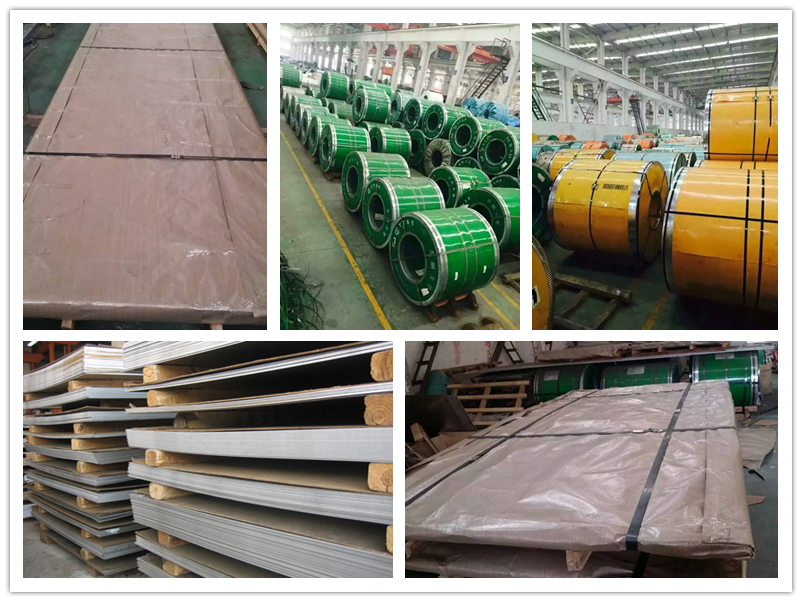
Application
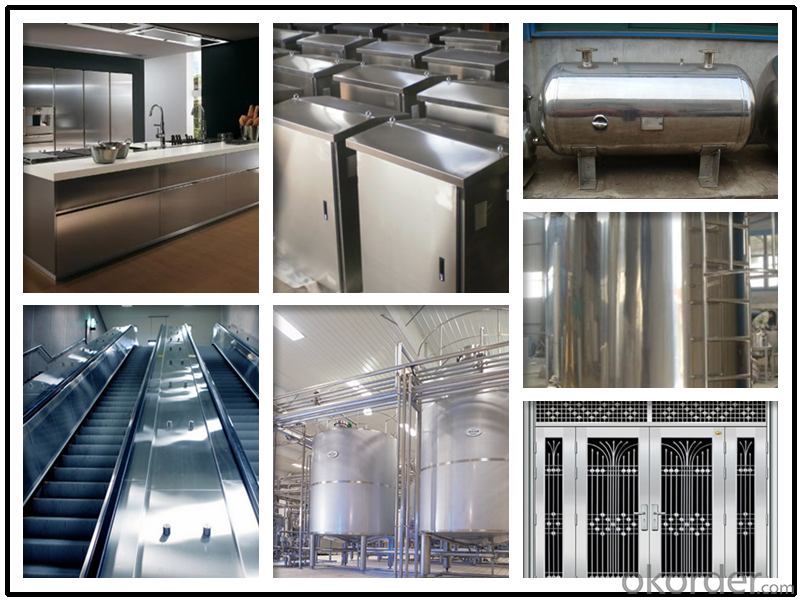
- Q: How to calculate the weight of stainless steel plate?
- There are usually only six kinds of steel related to the application of building construction. They all contain 17 to 22% chromium, and better steel also contains nickel. The addition of molybdenum can further improve atmospheric corrosion, especially for atmospheric corrosion resistant chlorides.
- Q: Are stainless steel sheets fire-resistant?
- Yes, stainless steel sheets are fire-resistant.
- Q: Are stainless steel sheets suitable for automotive exhaust systems?
- Yes, stainless steel sheets are suitable for automotive exhaust systems. Stainless steel is a preferred material for exhaust systems due to its high resistance to corrosion, heat, and vibration. It can withstand the high temperatures and harsh conditions that exhaust systems are exposed to, making it a durable and long-lasting choice. Additionally, stainless steel has excellent thermal conductivity, which helps in dissipating heat efficiently. It also offers good formability, allowing manufacturers to design and shape the exhaust components as needed. Overall, stainless steel sheets are a reliable and popular choice for automotive exhaust systems.
- Q: Can stainless steel sheets be polished or brushed?
- Yes, stainless steel sheets can be polished or brushed.
- Q: What is the price range of stainless steel sheets?
- The price range of stainless steel sheets can vary depending on various factors such as the grade of stainless steel, the thickness of the sheet, the size, and any additional finishes or coatings that may be applied. Generally, the price range for stainless steel sheets can start from around $20 per sheet for smaller sizes and standard grades, and can go up to several hundred dollars per sheet for larger sizes, higher grades, and specialized finishes. It is important to note that prices can also vary based on the supplier and market conditions, so it is advisable to compare prices from different sources to get the best deal.
- Q: How do I install stainless steel sheets?
- In order to install stainless steel sheets, there are a few steps that need to be followed: 1. Begin by accurately measuring the area where the stainless steel sheets will be installed. Use a tape measure to determine the length and width of the space. Furthermore, ensure that the surface is clean, dry, and devoid of any debris or contaminants. 2. If the stainless steel sheets you have acquired are not already pre-cut to the desired size, you will need to cut them to fit the area. Utilize a metal cutting saw, such as a circular saw or an angle grinder with a metal-cutting blade, to achieve precise cuts. As you cut, it is imperative to wear safety goggles and work gloves to protect yourself from any flying debris. 3. Depending on your preference, you can either use an adhesive or screws to secure the stainless steel sheets to the surface. If you opt for adhesive, apply a thin layer of construction adhesive to the back of the sheet and firmly press it onto the surface. For added security, you can also use screws to fasten the sheets. Begin by pre-drilling holes into the stainless steel sheets, then screw them into place using stainless steel screws. 4. Once the sheets are in position, ensure the edges are secure by utilizing trim pieces or stainless steel molding. This will provide a polished and finished appearance to your installation, while also offering additional protection to the edges of the sheets. 5. After the installation is complete, clean the stainless steel sheets using a mild detergent and a soft cloth. Avoid using abrasive cleaners or scrub brushes, as they can cause scratches on the surface. Regular cleaning and maintenance are essential for preserving the appearance and longevity of the stainless steel sheets. It is important to remember that if you have any uncertainties regarding the installation process, it is always advisable to consult a professional or seek guidance from the manufacturer of the stainless steel sheets you have purchased.
- Q: What are the applications of stainless steel sheets in the construction industry?
- Due to their unique properties and characteristics, stainless steel sheets have various applications in the construction industry. Here are some of the key uses of stainless steel sheets in construction: 1. Roofing and Cladding: Commercial and residential buildings often utilize stainless steel sheets for their roofing and cladding needs. These sheets are highly resistant to corrosion, harsh weather conditions, and fire, making them a durable and long-lasting option. 2. Facades and Curtain Walls: Stainless steel sheets are commonly employed in the construction of facades and curtain walls. Their appealing appearance, high strength, and resistance to staining and fading make them a popular choice for creating visually attractive and low-maintenance building exteriors. 3. Structural Components: Stainless steel sheets are utilized in the construction of structural components such as beams, columns, and support systems. The sheets' high strength-to-weight ratio, ability to resist deformation, and durability make them ideal for maintaining the structural integrity of buildings. 4. Handrails and Balustrades: Both indoor and outdoor settings often feature stainless steel sheets for designing handrails, balustrades, and guardrails. These sheets offer excellent resistance to corrosion, impact, and wear, while their sleek and modern appearance adds an aesthetic touch to the overall design. 5. Kitchen and Bathroom Fixtures: Stainless steel sheets are extensively used for fabricating kitchen and bathroom fixtures like sinks, countertops, backsplashes, and shower enclosures. Their ability to resist moisture, heat, and stains, along with their easy maintenance, make them a practical and hygienic choice. 6. Interior Design Elements: Various interior design elements, including wall panels, ceiling panels, elevator interiors, and decorative screens, utilize stainless steel sheets in their construction. The sheets' smooth and reflective surface, combined with their versatility in terms of finishes and patterns, allows for creating visually appealing and modern interiors. 7. HVAC Systems: HVAC systems often incorporate stainless steel sheets due to their high-temperature resistance, corrosion resistance, and ease of cleaning. These sheets are commonly used in ductwork, air handling units, and exhaust systems to ensure efficient and durable performance. In summary, stainless steel sheets offer numerous advantages in the construction industry, including durability, corrosion resistance, low maintenance requirements, and aesthetic appeal. These qualities make them a preferred choice for a wide range of applications, contributing to the overall quality and longevity of construction projects.
- Q: How do you prevent galvanic corrosion when using stainless steel sheets?
- One effective method to prevent galvanic corrosion when using stainless steel sheets is to ensure they are not in direct contact with dissimilar metals. This can be achieved by using insulating materials or coatings, such as rubber gaskets or paint, between the stainless steel sheets and other metals. Additionally, regular maintenance and cleaning of the stainless steel surfaces can help prevent the accumulation of corrosive substances that could lead to galvanic corrosion.
- Q: What are the different types of surface treatments available for stainless steel sheets?
- There is a variety of surface treatments accessible for stainless steel sheets, each with its own purpose and distinct advantages. 1. The Mill Finish is the most basic type of surface treatment, achieved directly from the mill after the stainless steel sheet's manufacturing process. It presents a smooth, dull appearance and is commonly utilized for a clean, unembellished look. 2. The Brushed Finish, also known as satin finish, entails brushing the stainless steel surface with a fine abrasive substance to create fine parallel lines. This finish offers a decorative, textured appearance while concealing any surface imperfections or scratches. 3. The Mirror Finish creates a highly reflective surface resembling a mirror. It is attained by progressively polishing the stainless steel sheet with finer abrasives until a glossy, reflective finish is achieved. This finish is commonly used in decorative applications where a high level of shine is desired. 4. The Bead Blasted Finish involves blasting the stainless steel surface with tiny glass beads at high pressure. This creates a uniform, matte texture with a slightly rough feel. The bead blasted finish is often employed in architectural applications to achieve a modern, industrial appearance. 5. The Etched Finish involves applying an acid or chemical solution to the stainless steel surface to form intricate patterns or designs. This treatment allows for a high level of customization and is commonly used in architectural, signage, and decorative applications. 6. PVD Coating, or Physical Vapor Deposition, is a process where a thin film of a specific material is deposited onto the stainless steel surface using a vacuum chamber. This coating can provide various colors and finishes, such as gold, black, or bronze, while also enhancing the durability and corrosion resistance of the stainless steel sheet. These examples represent only a fraction of the diverse surface treatments available for stainless steel sheets. The choice of treatment depends on the desired aesthetic, functionality, and application requirements.
Send your message to us
201 304 Stainless Steel Sheets TISCO LISCO ZPSS
- Loading Port:
- Shanghai
- Payment Terms:
- TT OR LC
- Min Order Qty:
- 1 m.t.
- Supply Capability:
- 2000 m.t./month
OKorder Service Pledge
OKorder Financial Service
Similar products
Hot products
Hot Searches
Related keywords
